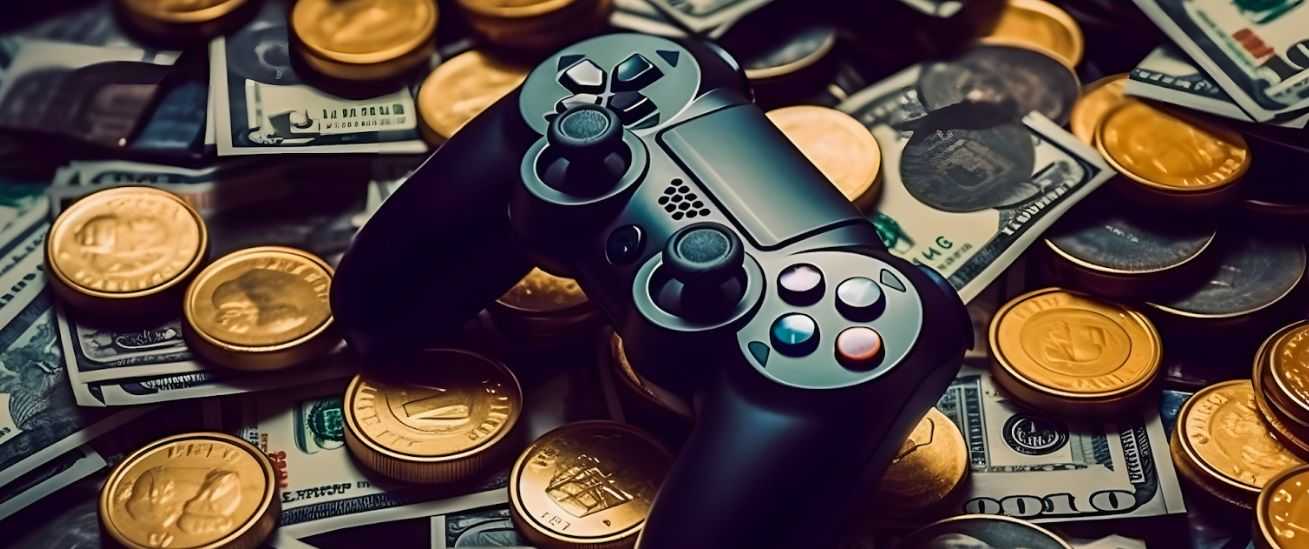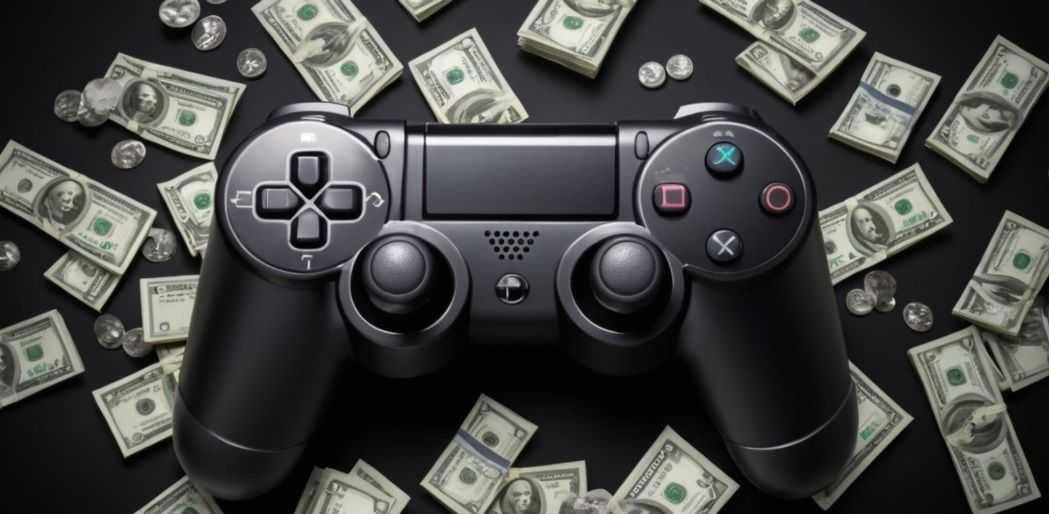Demystifying Crypto Gaming: Insights on Where to Place Your Bets!
The article discusses the evolution and potential of blockchain gaming as a driver of mass adoption of cryptocurrencies. It acknowledges that early blockchain games were of low quality and faced skepticism from the gaming community. However, the article highlights that the industry has made significant progress, with projects like Heroes of Mavia and Off the Grid exemplifying the potential of blockchain gaming.
The article explores the unique characteristics of blockchain games that differentiate them from traditional games. These include decentralization, interoperability, user control and portability of assets, and the play-to-earn mechanics. It emphasizes the significance of interoperability in broadening the potential market for in-game assets, allowing players to transfer assets across different platforms and games.
The play-to-earn mechanics, where players can earn digital assets like native tokens or non-fungible tokens (NFTs) simply by playing, is seen as a paradigm shift in gaming dynamics. This aspect is particularly valuable in regions with limited job opportunities.
The article briefly mentions the concept of the metaverse but states that it is not yet a reality in blockchain gaming. It suggests that the industry should focus on producing proper games before immersing players in virtual reality.
In terms of the market, the article notes that blockchain gaming has experienced considerable growth, with daily unique active wallets reaching 12 million as of November 2023. The blockchain gaming market surpassed $3 billion in valuation in 2023, with projections suggesting exponential growth to reach $65 to $90 billion by 2030.
The article then shifts focus to the underlying infrastructure of blockchain gaming. It explains the importance of gaming platforms that provide developers with tools and services to scale their games, such as APIs, software development kits (SDKs), and marketplace solutions. It also highlights the role of blockchain projects in supporting secure transactions, decentralization, and interoperability across games.
Several blockchain ecosystems are mentioned as leading choices for gaming, including NEAR Protocol, Solana, SKALE, Arbitrum, and Ronin. Each ecosystem offers unique features and benefits for developers and gamers, such as scalability, low fees, and user-friendly experiences.
Finally, the article discusses the investment potential of blockchain gaming. It suggests treating it as part of a diversified crypto portfolio, with larger investments in established infrastructure projects, mid-cap investments in leading gaming platforms, and smaller investments in individual gaming tokens. The article emphasizes the importance of considering market trends, regulatory changes, and technological advancements when making investment decisions in the blockchain gaming sector.
In conclusion, the article provides a thorough overview of blockchain gaming, highlighting its growth potential, unique characteristics, infrastructure, and investment opportunities. It presents a balanced perspective on the current state of the industry and its future prospects.
The article discusses the evolution and potential of blockchain gaming as a driver of mass adoption of cryptocurrencies. It acknowledges that early blockchain games were of low quality and faced skepticism from the gaming community. However, the article highlights that the industry has made significant progress, with projects like Heroes of Mavia and Off the Grid exemplifying the potential of blockchain gaming.
The article explores the unique characteristics of blockchain games that differentiate them from traditional games. These include decentralization, interoperability, user control and portability of assets, and the play-to-earn mechanics. It emphasizes the significance of interoperability in broadening the potential market for in-game assets, allowing players to transfer assets across different platforms and games.
The play-to-earn mechanics, where players can earn digital assets like native tokens or non-fungible tokens (NFTs) simply by playing, is seen as a paradigm shift in gaming dynamics. This aspect is particularly valuable in regions with limited job opportunities.
The article briefly mentions the concept of the metaverse but states that it is not yet a reality in blockchain gaming. It suggests that the industry should focus on producing proper games before immersing players in virtual reality.
In terms of the market, the article notes that blockchain gaming has experienced considerable growth, with daily unique active wallets reaching 12 million as of November 2023. The blockchain gaming market surpassed $3 billion in valuation in 2023, with projections suggesting exponential growth to reach $65 to $90 billion by 2030.
The article then shifts focus to the underlying infrastructure of blockchain gaming. It explains the importance of gaming platforms that provide developers with tools and services to scale their games, such as APIs, software development kits (SDKs), and marketplace solutions. It also highlights the role of blockchain projects in supporting secure transactions, decentralization, and interoperability across games.
Several blockchain ecosystems are mentioned as leading choices for gaming, including NEAR Protocol, Solana, SKALE, Arbitrum, and Ronin. Each ecosystem offers unique features and benefits for developers and gamers, such as scalability, low fees, and user-friendly experiences.
Finally, the article discusses the investment potential of blockchain gaming. It suggests treating it as part of a diversified crypto portfolio, with larger investments in established infrastructure projects, mid-cap investments in leading gaming platforms, and smaller investments in individual gaming tokens. The article emphasizes the importance of considering market trends, regulatory changes, and technological advancements when making investment decisions in the blockchain gaming sector.
In conclusion, the article provides a thorough overview of blockchain gaming, highlighting its growth potential, unique characteristics, infrastructure, and investment opportunities. It presents a balanced perspective on the current state of the industry and its future prospects.
Understandably, after witnessing the output of the last bull run, many of us had doubts about the notion of blockchain gaming leading the way to mass adoption. If you recall the quality of games from that time, the optimists were hopeful. Deep down, we knew we were getting excited over something that was, at best "meh." To make things even more difficult, the real-world gaming community’s view of blockchain gaming was brutal. It created a significant uphill battle, one that we lost as we faded into the bear market.
To be fair and without naming names, some of the games were pretty rough; in fact, most of them were downright awful. But the good news is we've come a long way. Projects that worked hard over the bear market have built some stellar products. Heroes of Mavia and the upcoming Off the Grid are prime examples of what studios should have worked toward a few years back.
Now that blockchain gaming appears on the right track, it makes sense to examine this sector more closely. Further, if this marks the dawn of mass adoption, we might want to consider where to invest. In this article, we will be demystifying crypto gaming — quickly reviewing blockchain gaming and the market, examining the underlying infrastructure, looking at some notable projects, and suggesting how to tackle the sector as an investor.
Before we move any further, I'd like to direct your attention to a few crypto gaming-focused articles on The Coin Bureau:
- Will Crypto Gaming Ever Reach Mainstream Adoption?
- Will GameFi be Bigger than DeFi?
- 10 Best Crypto Games of 2024
Overview of Blockchain Gaming
Blockchain games set themselves apart from traditional counterparts in several ways. Firstly, they embrace decentralisation, often developed and managed by decentralised autonomous organisations (DAOs) rather than a single entity. This decentralised model enhances security and resilience, making it more challenging to compromise or randomly terminate the game. Secondly, blockchain-based games are interoperable, enabling seamless interaction with other games on the blockchain. This interoperability not only enriches the gaming experience but also broadens the potential market for in-game assets.
Tied with interoperability, blockchain gaming prioritises user control and portability of data and assets. Gamers own and control their in-game items, allowing them to transfer these assets across different platforms or games when they feel like it, which makes the experience much more dynamic and player-centric. A lot of people underestimate just how amazing this aspect of interoperability can be. Linkin Park co-founder Mike Shinoda certainly got it when he stated on the X Platform, "Imagine taking your favourite skin from Valorant, and using it [in] Fortnite. And not paying extra, because you own it. Then using it in CoD, Minecraft, even Twitter, IG." It really is amazing!

Arguably, one of the most appealing aspects of blockchain gaming is the play-to-earn mechanics. Players acquire digital assets such as native tokens or NFTs simply by playing, so it’s easy to understand the allure. These assets hold real-world value and can be traded on decentralised marketplaces for fiat currency. The advent of the play-to-earn revolution, epitomised by games like Axie Infinity, is truly a paradigm shift in gaming dynamics. Players can now earn tokens by engaging in gameplay, providing a viable income stream, particularly beneficial in regions with limited job opportunities.
We obviously can’t write an article about blockchain gaming without at least mentioning the metaverse, so there — it’s mentioned. You’ve already been inundated with the metaverse narrative for at least the past two years regarding blockchain gaming, that won’t happen here. Whether we'll see it materialise in 2024 or even 2025 remains to be seen, but it's highly unlikely. Therefore, we'll sidestep the metaverse aspect in gaming because, frankly, it doesn't truly exist at this point. Blockchain is only beginning to produce proper games, let alone ones that immerse you in virtual reality. Undoubtedly, when it does come together, we'll be here waiting, but for now, let's take a quick look at the gaming market.
The Crypto Gaming Market
Recognizing that the overall gaming market consistently trends upward isn't exactly groundbreaking. However, blockchain gaming, which is witnessing decent growth, is certainly more exciting and warrants a closer examination.
As of November 2023, blockchain gaming has experienced considerable growth and sustained popularity. Daily Unique Active Wallets (dUAW) have risen to an impressive 1.2 million, a substantial 14% increase from the preceding month. This surge is due to the industry's growing appeal (i.e. the games are getting substantially better), with blockchain gaming now commanding a notable 34% share of the entire Web3 space, affirming its pivotal role in the decentralised landscape.
Regarding market size and projections, the blockchain gaming market surpassed $3 billion in valuation in 2023. Projections suggest exponential growth, with estimates ranging between $65 to $90 billion by 2030. Various factors, including heightened investment activity, widespread adoption of NFTs, and the advent of innovative business models fuel this growth trajectory. Undoubtedly, blockchain gaming will continue to expand significantly, propelled by ongoing technological advancements, escalating interest from players and investors, and most importantly - games that aren’t brutal to play.

Blockchain Gaming Infrastructure
While it may seem less thrilling to shift focus from the hottest blockchain games to something more practical like the underlying infrastructure, insiders understand that we're on the brink of blockchain gaming gaining wider acceptance. So, directing attention towards infrastructure could be a smart move, and there are two ways we can do this.
Firstly, we can look at actual underlying platforms that allow builders to scale their Web3 games by simplifying development, connecting them with a gaming community, or giving them access to a marketplace for streamlining monetization. Secondly, we can also look at the underlying blockchain and what it is doing to accommodate developers in an effort to draw them to its ecosystem. Let’s take a closer look!
Gaming Platforms
So, without unnecessarily listing off specific projects, let's examine what most platform-based infrastructure projects include as a service, and what you can expect from them as a gamer, developer, or investor.
Generally, a platform can provide a game developer with an API to work with and software development kits (SDKs) to enable the transfer of ERC721, ERC1155, & ERC20 tokens, mint or update NFTs, and other important functions. The tools provided will secure your NFT economy and facilitate user engagement, instilling the trust necessary for user participation. Additionally, projects might offer a marketplace solution, allowing gamers the flexibility to sell their NFTs or in-game creations. Some even allow you to integrate a branded storefront if you opt to create and sell your own in-game NFTs.
Another benefit is that these platforms can assist in Web3 integration by implementing Solidity coding, web3.js, GraphQL, and IPFS and managing nodes — a task that can be complex and time-consuming for developers new to Web3. These platforms can also deploy a Web3 stack far quicker than manual methods would allow, streamlining the development process and enabling developers to focus on the actual game.
Some of these projects also offer the chance to engage with their existing Web3-focused gamer community. This helps promote a game to a large audience primed for new projects and products, which could translate into increased NFT sales in the marketplace. Another fantastic feature is the platform's incubation and project launch. As a developer, getting a solid one-stop shop that helps you from the beginning of your project to the launching stage is amazing value.
Additionally, we shouldn’t overlook the potential partnerships that result when a developer collaborates with a specific platform. These partnerships could include gaming and Web3 organisations like blockchains, game communities, guilds, and Web3 development leaders. Web3 thrives on partnerships, and they're effective—the more exposure your product receives, the better.
Blockchains
Now let’s look beyond the features noted above and consider the underlying blockchain projects that support them. These projects enable secure transactions, decentralised ownership, and interoperability across various games, making them a deliberate and strategic choice for developers. While platforms certainly hold value, the true power lies in the foundational infrastructure. What good is a game, if it can’t handle enough transactions per second or can’t keep your assets secure?
Blockchain platforms gearing up for gaming typically address high throughput and low latency by implementing innovative solutions such as sharding, layer-2 scaling solutions, or specialised gaming-focused chains. Sharding involves splitting the blockchain network into smaller partitions (shards) to process transactions in parallel, thereby increasing throughput. Layer-2 scaling solutions, like sidechains or state channels, facilitate off-chain processing of transactions to reduce latency and alleviate congestion on the main blockchain. Specialised gaming chains, such as those optimised for Web3 gaming experiences, prioritise low latency and high throughput to ensure seamless gameplay.
Developers are attracted to chains that prioritise speed, security, and seamless interactions due to their enhanced gaming experience and trustworthiness. Chains that provide fast transaction processing and low latency ensure smooth gameplay without delays or disruptions. Security measures, such as encryption, multi-factor authentication, and decentralised storage, protect user accounts, assets, and transactions from unauthorised access and fraud.
In the following section, we'll examine some chains that have carefully considered the above-mentioned factors and have made a concerted effort to establish themselves as the preferred choice for gaming. They recognize the significant size of the gaming market and the demand for a dedicated platform.

Leading Blockchain Ecosystems
Here are a few blockchains looking to establish themselves as the go-to choice for gaming.
NEAR Protocol
NEAR Protocol, a sharded Layer 1 blockchain, addresses decentralisation, scalability, and security challenges, intersecting with the gaming industry profoundly.
Firstly, in eSports, NEAR facilitates composable fandom, allowing fans to interact with their favourite gamers, teams, and brands via NFTs. Platforms like ARterra Labs choose NEAR for its scalability and user-friendly experience, subsidising gas costs and simplifying crypto interactions for users. Secondly, NEAR empowers true ownership of in-game assets and portable items through smart contracts and NFTs, enhancing player experiences. Thirdly, NEAR tackles the Blockchain Trilemma by implementing sharding, splitting the network into smaller partitions for parallel transaction processing, and ensuring high throughput and responsiveness.
Additionally, NEAR prioritises user experience, aiming to be accessible for gamers, fans, and collectors by subsidising gas costs and handling private keys.
Solana
Solana is a well-known high-performance blockchain network that processes transactions at lightning speed, achieving consensus and finality almost immediately (which ensures a seamless gaming experience without long wait times). Transaction fees on Solana are incredibly low, costing only a fraction of a cent per transaction, eliminating concerns about fees slowing things down.
Designed for Web3 experiences at scale, Solana's single global state architecture allows for in-ecosystem composability, enabling developers to create ownable digital assets like NFTs for players to truly own and trade their in-game items, fostering the creation of real in-game economies and composable game programs. Integration with Metaplex allows game developers to mint NFTs for their fans, providing tools for creating, managing, and distributing NFTs within games. Solana Labs' GameShift simplifies building games on Solana, while xNFTs by Coral enable developers to create cross-game items, enhancing the metaverse experience.
Skale
The SKALE network offers an invisible blockchain experience for gamers, eliminating lag times and high transaction fees, and enhancing the gaming experience with unparalleled speed, low latency, and instant finality. With zero gas fees, players can seamlessly perform in-game actions on-chain without incurring any costs.
Additionally, SKALE provides native file storage, on-chain random number generation (RNG), and gaming SDKs out of the box, allowing developers to prototype quicker, build faster, and iterate without added costs. Evaluated as the fastest blockchain in the industry by a comparison study conducted by Dartmouth, SKALE was named the most active gaming chain by CoinGecko in 2023, gaining trust from developers, creators, and builders globally.
Arbitrum
Arbitrum is an Ethereum Layer 2 that is also well positioned for blockchain-related gaming. Within the Arbitrum ecosystem, Arbitrum Nova, specifically designed for gaming and social applications, utilises AnyTrust technology and prioritises ultra-low fees and high security, catering to the needs of gamers and social experiences.
Arbitrum integrates seamlessly with Ethereum's ecosystem, enhancing scalability for existing applications while offering the security and user base of Ethereum. The gaming scene on Arbitrum has seen steady but modest growth in daily active gamers, shaping the future of blockchain gaming as more projects explore its potential.
Ronin
RONIN is an EVM blockchain tailored for developers building games with player-owned economies. With millions of users experiencing RONIN, resulting in billions of dollars in NFT volume, its track record demonstrates reliability and scalability for gaming applications.
Transactions on RONIN are quick, cheap, and seamless, allowing players to perform in-game actions without worrying about high gas fees. Unlike Ethereum, where miners receive gas fees, RONIN retains these fees for community use, such as tournaments and bounties. Being EVM compatible, RONIN allows developers to deploy their Ethereum applications quickly with no alterations, ensuring a smooth transition for existing projects. As the only blockchain for gaming that has been battle-tested to accommodate millions of daily active on-chain users, RONIN's combination of scalability, low fees, and developer-friendly features positions it as a standout performer in the blockchain gaming space.

Crypto Gaming as an Investment
Blockchain gaming's investment appeal stems from its unique fusion of digital assets and decentralised technologies. This convergence offers not only entertainment value but also economic opportunities. Players can own and monetize in-game assets, earning tokens convertible to valuable cryptocurrencies. Or, investors can participate in these cryptocurrencies without ever actually playing the game. It’s clear that this sector is more than just a fleeting trend — it represents a fundamental shift in how we interact with digital content and economies.
Obviously, the growth trajectory of blockchain gaming is influenced by a lot of factors, including regulation, technological advancements, and cultural shifts. Regulatory changes can impact the legality and accessibility of gaming platforms, while technological advancements, such as improvements in blockchain scalability and interoperability, can open up new possibilities for innovation. Additionally, cultural shifts in consumer preferences and gaming trends can shape the demand for certain gaming experiences. So, in the Web3 environment, which is already characterised by high risk and volatility, the gaming sector stands out as even more turbulent. So how do we navigate it?
One way is to think of it as building a diversified crypto portfolio. Just as you might allocate a larger portion to established coins like BTC, a smaller part to major altcoins like ETH or SOL, and a riskier share to mid and small-cap coins, the gaming sector follows a similar pattern. Larger infrastructure projects are similar to your established coins while leading gaming platforms could represent mid-cap investments, and individual gaming tokens are more like small-cap ventures with higher risk. Of course, it's essential to consider broader market trends too. For instance, buying a gaming token at its peak during a bull market might not be the wisest move — just a friendly reminder, not financial advice.
In the context of blockchain gaming, a similar approach might be taken. Investors interested in the infrastructure supporting blockchain gaming could consider investing in companies or projects involved in developing the underlying technologies, platforms, or ecosystems that facilitate blockchain gaming. This could include blockchain technology companies, gaming platforms built on blockchain, or projects that create tools and protocols for blockchain-based game development and distribution.
Sure, there are many ways to tackle blockchain gaming investing. We might follow influencers and ape in impulsively, base decisions on gameplay, or simply invest in every launchpad’s gaming project. But, when navigating one of the riskier sectors of Web3, it's probably smart to stick to strategies that have historically proven effective, just slightly adapted to suit the unique dynamics we see here.
Conclusion
By seamlessly integrating crypto elements into games, developers hope to introduce millions of players to digital currencies and effectively build familiarity with concepts such as wallets, blockchain, and digital ownership. Gamers can gain firsthand experience with crypto transactions through gameplay, as in-game rewards, achievements, and collectables are often tokenized using blockchain technology. This educational process naturally bridges the gap between traditional players and the crypto world, paving the way for broader adoption.
In the meantime, for those of us eager to invest in the space, a structured approach now guides us as we seek out promising projects to place our bets. Should a game pique our interest, we can explore its platform or assess the blockchain supporting it to uncover additional insights. And, while the volatile double-digit fluctuations on the price chart may not offer much solace, considering a cautious strategy emphasising the importance of underlying infrastructure can significantly improve our odds. Once again, nothing in this article should be considered financial advice!
Frequently Asked Questions
Blockchain gaming differs from traditional gaming in several key ways. Firstly, it embraces decentralization, often managed by decentralized autonomous organizations (DAOs) instead of single entities. Secondly, blockchain-based games prioritize interoperability, allowing seamless interaction with other games on the blockchain. Thirdly, players have greater control and ownership of in-game assets, which can be transferred across different platforms or games.
Play-to-earn mechanics in blockchain gaming allow players to acquire digital assets such as native tokens or non-fungible tokens (NFTs) simply by playing the game. These assets hold real-world value and can be traded on decentralized marketplaces for fiat currency, providing players with a viable income stream.
Blockchain gaming introduces millions of players to digital currencies by seamlessly integrating crypto elements into gameplay. Players gain firsthand experience with crypto transactions as in-game rewards, achievements, and collectables are often tokenized using blockchain technology. This educational process helps bridge the gap between traditional players and the crypto world, paving the way for broader adoption of cryptocurrencies.
The growth trajectory of blockchain gaming is influenced by various factors, including regulatory changes, technological advancements, and cultural shifts. Regulatory changes can impact the legality and accessibility of gaming platforms, while technological advancements in blockchain scalability and interoperability can open up new possibilities for innovation. Additionally, cultural shifts in consumer preferences and gaming trends shape the demand for certain gaming experiences.
Disclaimer: These are the writer’s opinions and should not be considered investment advice. Readers should do their own research.

